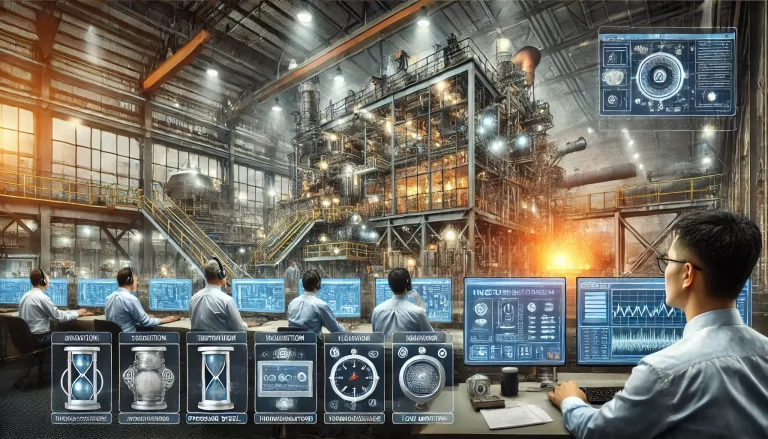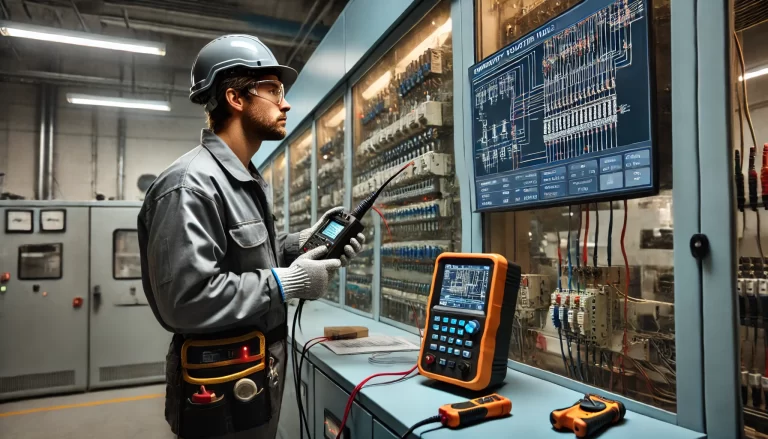In the design process of instrumentation and control (I&C) systems, it is crucial to stay updated with the latest inspection trends and requirements set by the local emergency management authorities. Keeping abreast of these updates ensures compliance with safety regulations, minimizes errors, and prevents excessive omissions during the review process of safety reports. This approach enhances the overall integrity and reliability of the project.

Key Considerations During Project Implementation
During the implementation phase of an I&C project, the following aspects must be carefully monitored to ensure safety, reliability, and compliance:
Explosion-Resistant Control Room: The control room must be constructed as an explosion-resistant building to ensure personnel and equipment safety in case of hazardous incidents.
Uninterruptible Power Supply (UPS) for Instrumentation: A UPS system with a minimum backup time of 30 minutes should be provided to ensure continuous operation during power failures.
Buffer Tank for Instrument Air Supply: A buffer tank with a minimum capacity to sustain operations for 15 minutes must be installed to prevent sudden disruptions in the instrument air supply.
Grounding System for Instruments: The grounding resistance should not exceed 4Ω. Proper grounding methods must include instrument housing grounding, system grounding, and cable tray grounding to prevent electrical faults and ensure operational safety.
Lightning Protection for Instruments: If the local area experiences more than 15 days of lightning storms annually, surge protection devices (SPD) must be installed to protect sensitive instrumentation from damage.
Ingress Protection (IP) Rating for Instruments: Instruments should have a minimum protection rating of IP65 to prevent ingress of dust and water, ensuring durability in harsh environments.
Corrosion Protection for Instrument Cable Trays: In marine environments or areas with high corrosion potential, the corrosion protection level should be at least C5. The commonly selected materials for cable trays include hot-dip galvanized steel, aluminum alloy, or fiberglass-reinforced plastic (FRP).
Corrosion Protection for Instrument Housing: The external surface of instruments should be coated with corrosion-resistant paint to extend their lifespan in aggressive environments.
Explosion Protection Levels: Instruments must adhere to explosion protection standards. Typical requirements include:
Instrument explosion-proof classification: Exia IICT4 or Exd IICT4.
Explosion-proof classification for flexible conduits: Exd IICT4.
Continuous connection method for explosion-proof flexible conduits to maintain integrity.
Independent Control Systems: The control systems should be designed as independent entities to ensure operational safety and avoid interference between systems. The primary control systems include:
Distributed Control System (DCS)
Safety Instrumented System (SIS)
Gas Detection System (GDS)
Clock Synchronization Among Control Systems: The control systems must have synchronized clocks, typically using a Global Positioning System (GPS), to ensure accurate data logging and coordination.
Periodic Inspection of Control Systems: Regular maintenance and inspections must be conducted to ensure system reliability. The standard inspection cycle for control systems is six years.
Calibration of Pressure Gauges: Pressure gauges should be calibrated every six months to maintain measurement accuracy and ensure operational safety.
Calibration of Gas Detectors: Gas detectors must be calibrated annually. Under normal operating conditions, the typical lifespan of a gas detector ranges from three to five years, after which replacement or recalibration is necessary.

By adhering to these key design and safety inspection principles, I&C engineers can enhance the operational reliability of instrumentation systems, comply with regulatory requirements, and ensure a safe working environment for personnel and equipment.
